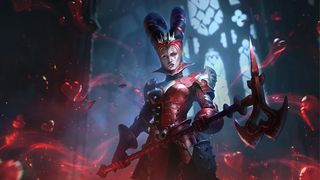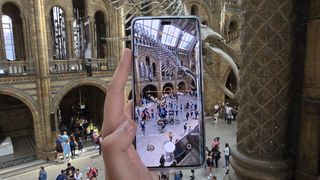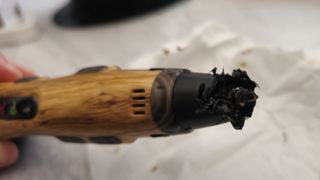Why I hate Wenlock and Mandeville
Pentagram’s Angus Hyland rails against the anodyne, design-by-committee aesthetic of the Olympic mascots
As an art director, if I didn’t have an informed opinion on a consistent basis, every day, I might as well go home and paint a picture. Which is what I intended to do. Only I’m up against this deadline. Thank God for deadlines. Without these finalities, like most humans, I would procrastinate forever…
Since I am unlikely to become a prolific blogger and even my tweets are pathetically sporadic, I adopted a useful, if oblique strategy to find a subject worth spending the time to write about for this article: I called in a partner.
One of the great privileges of being at Pentagram, possibly the greatest privilege, is to have on tap the advice and opinion of a peer group of clever and talented individuals. Therefore, when in doubt email Michael Bierut.
As predicted, Michael immediately returned my request for a subject, suggesting I write about the Death of Drawing. Perfect. Like all good advice that we act on, this provided not the solution but the impetus to what I had subliminally wanted to write about. I had had this vague notion that since I am not interested or especially charmed by the idea of ‘computer’ arts, I should write in defence of non-computer arts. After all, I have recently completed the packaging for a range of drawing pads for the artist materials retailer, Cass Art. This was a dream project, because after consulting for Cass Art for nearly 10 years, I finally had the opportunity to help shape some own-brand product.
The range is illustrated with what I call ‘primal’ mark making. We used the medium that the stock was intended for to express its qualities on the cover. So, for instance, the marker paper is illustrated through a number of felt marker stripes drawn in variations of the same colour. Whilst I think the results are rather beautiful, whatever quality they have in artistic value I would argue is a moot point since I have become more interested in the satisfaction I gained in creating them than the end results. Satisfaction in the process is the point of the brand; that it is good and rewarding to make art and we would all be better off spending time in the pursuit of creativity.
As a business, Cass Art is thriving perhaps, or mostly because, it fulfills a growing demand. That demand is for a real alternative to our increasingly humdrum and narrow existence absorbed as we are, both professionally and socially, on our screens. We move by increasing stages further and further away from the real, away from the physical, the here and the now, and into a hyper reality. Perhaps this is why I have such a strong antipathy towards our Olympic mascots, those anodyne monsters, because they are very much the products of this augmented world.
As the story of their origin goes, Wenlock and Mandeville were formed in a Bolton steelworks out of the last girder to be made for the construction of the Olympic Stadium. A creation myth closer to Eve than Adam, they were not, of course, sculpted out of a steel rib but conceived and born digitally; and the digital world is where they belong. If you consider interaction to be a form of engagement then arguably they work at a certain level. You can customise their appearance or play various Olympic events as computer games. But they reek of committee decisions and that terrible need for political correctness that seems to destroy all trace of charm or idiosyncrasy.
Unlike the best anthropomorphic mascots, they appear thoroughly dehumanised. Which is a shame considering the Olympics is supposed to represent the best in human endeavour and character. The final irony is that they seem closely influenced by the style of the Noughties’ kids craze Gogo’s Crazy Bones. Gogo’s [sic] are produced by the Catalan company Magic Box Int. and we should be reminded that it was the Catalans who came up with Cobi, Javier Mariscal’s wonderful and handcrafted mascot of the 1992 Barcelona Olympics. What a pity the creators of Wenlock and Mandeville didn’t look there for their inspiration.
Get the Creative Bloq Newsletter
Daily design news, reviews, how-tos and more, as picked by the editors.

Thank you for reading 5 articles this month* Join now for unlimited access
Enjoy your first month for just £1 / $1 / €1
*Read 5 free articles per month without a subscription

Join now for unlimited access
Try first month for just £1 / $1 / €1
The Creative Bloq team is made up of a group of design fans, and has changed and evolved since Creative Bloq began back in 2012. The current website team consists of eight full-time members of staff: Editor Georgia Coggan, Deputy Editor Rosie Hilder, Ecommerce Editor Beren Neale, Senior News Editor Daniel Piper, Editor, Digital Art and 3D Ian Dean, Tech Reviews Editor Erlingur Einarsson and Ecommerce Writer Beth Nicholls and Staff Writer Natalie Fear, as well as a roster of freelancers from around the world. The 3D World and ImagineFX magazine teams also pitch in, ensuring that content from 3D World and ImagineFX is represented on Creative Bloq.




